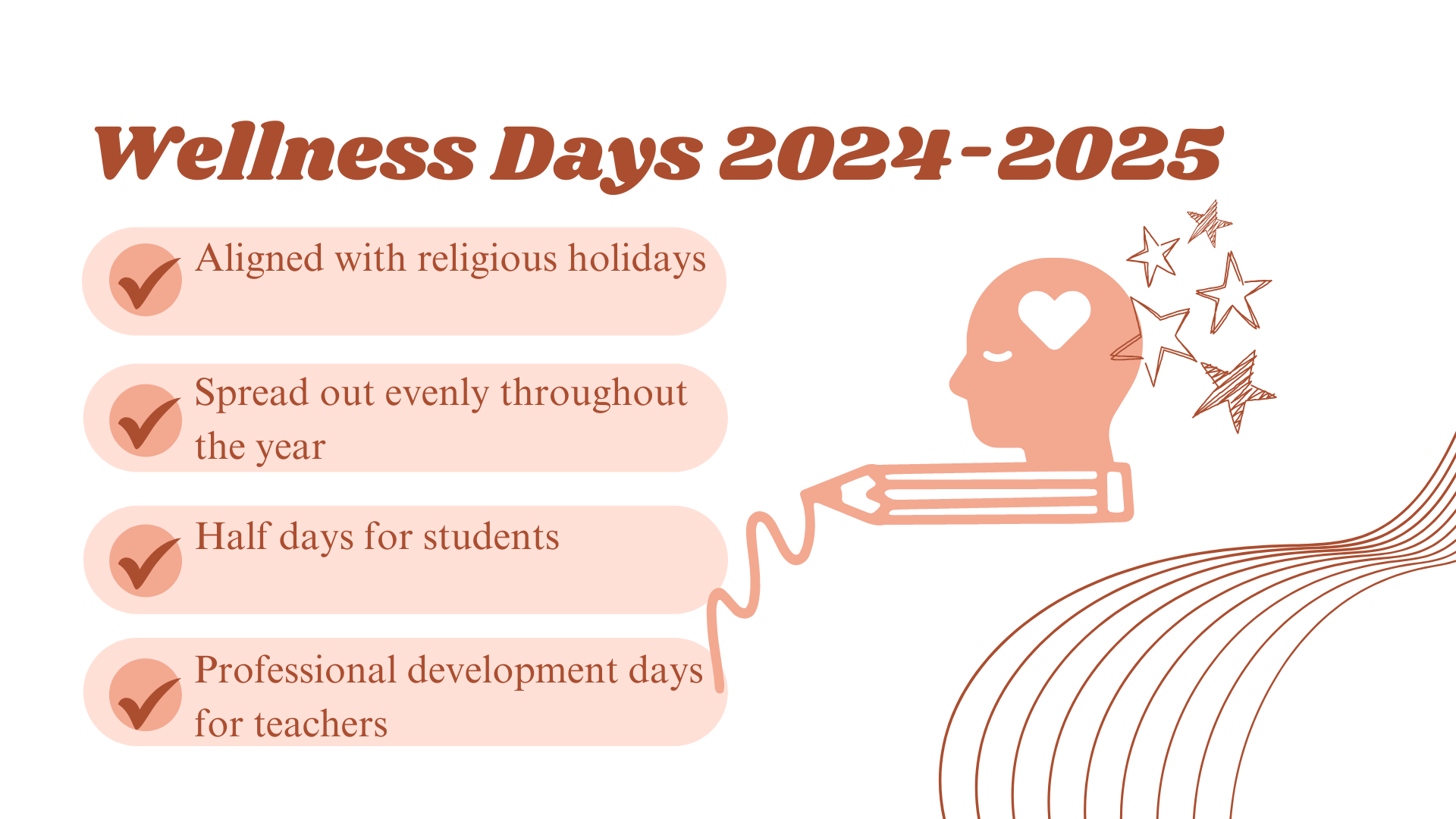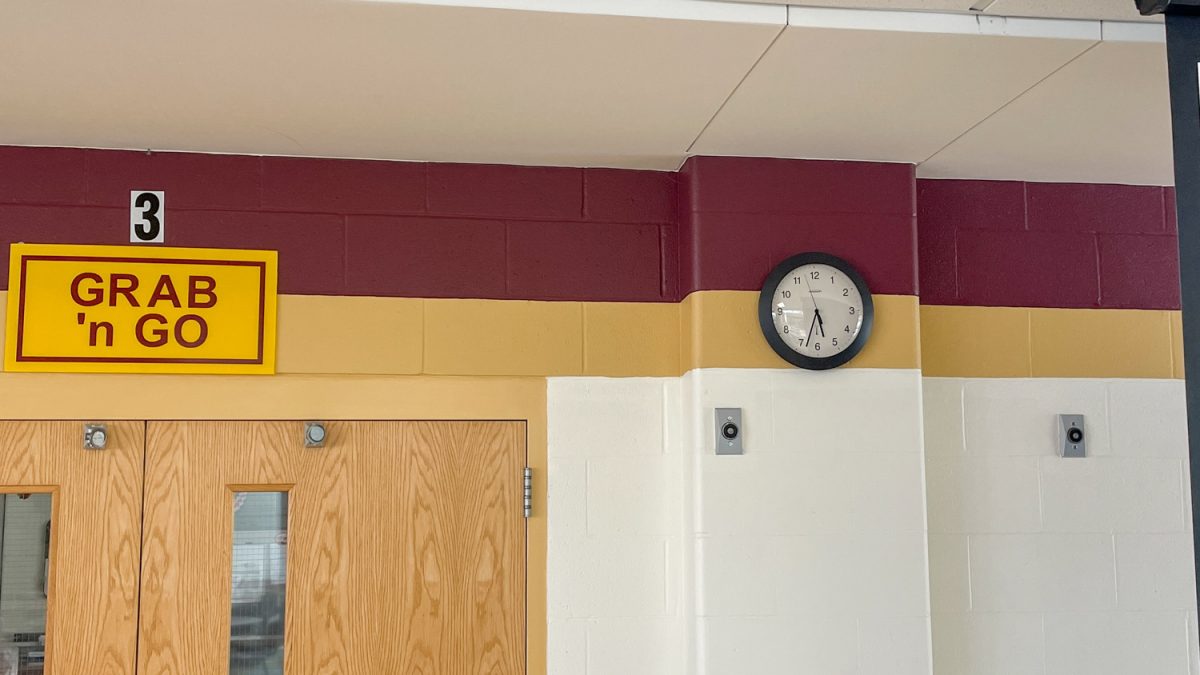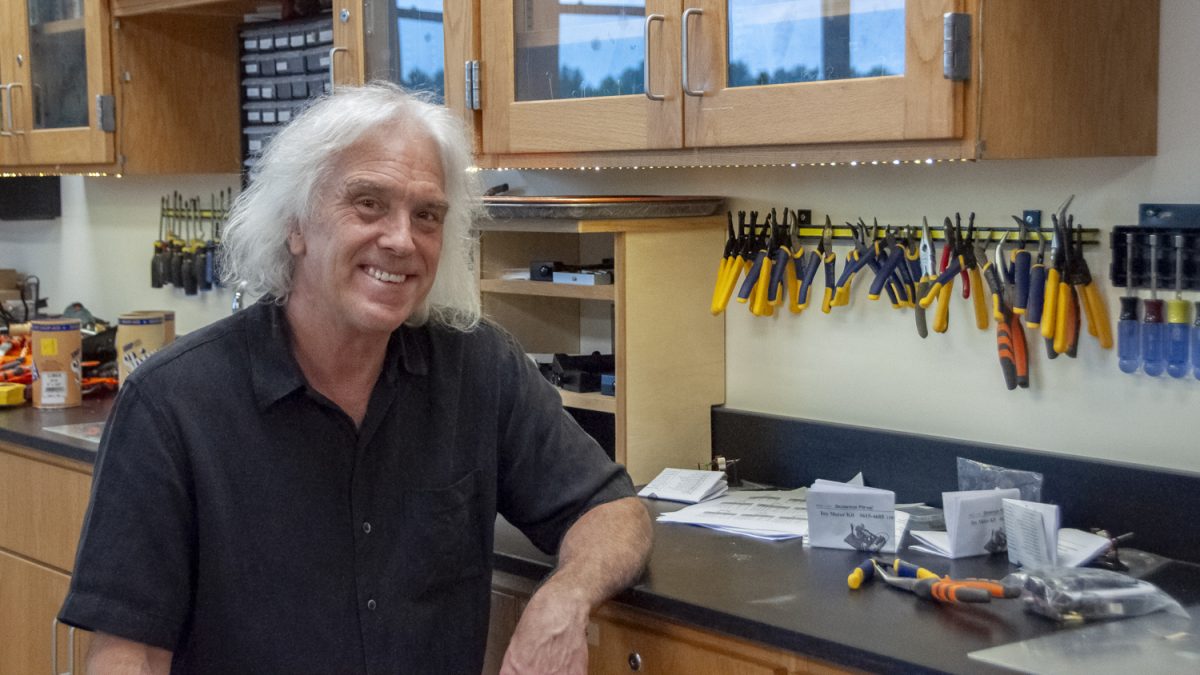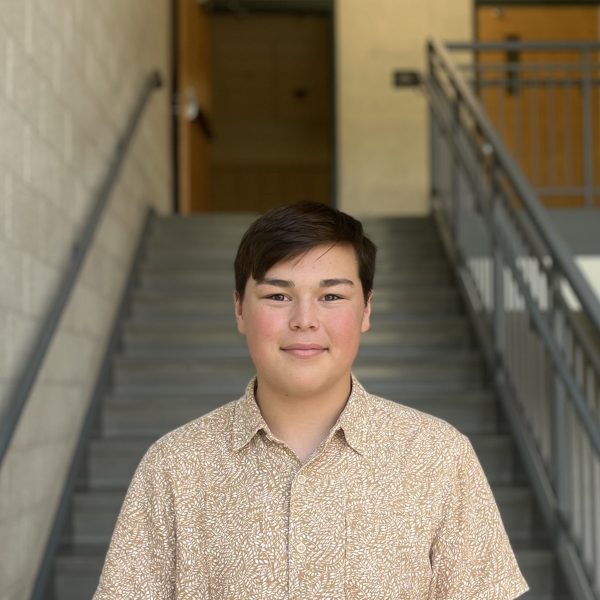
For the upcoming school year, Wellness Days are transforming for students to now have three half days for wellness spread throughout the year.
Following community input advocating for a more evenly distributed schedule to reduce workload buildup, the school has planned changes that seek to fulfill these requests. The restructured days are distributed evenly throughout the year while simultaneously landing on religious holidays: Diwali on Nov. 1, Lunar New Year on Jan. 29 and Eid on March 31. Each of these days will be observed as half days for students and professional development days for teachers in the afternoon.
Superintendent Gregory Martineau supported these changes in an effort to align with the needs of students.
“Hopefully we’ll be able to get the intended outcomes that we hope to achieve which really are student health and wellness,” Martineau said. “Giving students a reprieve of no tests, homework, quizzes, just some time and space. That’s not easy to find in schedules these days.”
The benefits that the half days give the community are not limited to giving students time off.
“What we struggle with as a district is time for teachers to learn, so those days will be professional learning days in the afternoons for teachers,” Martineau said. “We’re also going to be working with the towns’ recreation departments and youth and family services and trying to provide opportunities for kids to engage in wellness learning if they want in the afternoon during the half day.”
The reimagined Wellness Days not only provide a pause from academic rigors but also align with significant religious holidays, reflecting consideration of the school’s diverse community. Principal Sean Bevan explained the planning behind the decision.
“They’re structured around some of our major religious observance days so it does give students who are observing those holidays a chance to do that without having to make a calculation between being successful in their class on a test they have tomorrow and observing their religious rituals,” Bevan said. “It met different needs and the goal was really about taking a break from the collective pressures.”
The scheduling in the 2023-2024 calendar proved to have challenges.
“The feedback that we got… was that where the Wellness Days were set in the calendar created this unintended impact of landing all in a part of the year where they piled up and made it paradoxically a little bit more stressful for students than they were intended to be,” Bevan said.
In contrast to the schedule of full Wellness Days, students like sophomore Nyla Collison see the new half-day format as an improvement.
“Half days are perfect,” Collison said. “I think it’s a good change because with the Wellness Day, we still had school and we were still learning, but we didn’t have homework and then it would all be due at the end of the week.”
Junior David Allexenberg shared the sentiment but had some reservations about the potential for build-up of work.
“The half days for sure leave more time for people to do whatever they want,” Allexenberg said. “I don’t know if it really helps out with the main issue of the Wellness Days but I think giving students more time to be at home or to do whatever they want would for sure help kind of alleviate some of those problems.”
Building on this perspective, Allexenberg acknowledges the problems that students experience and the potential for these changes to improve overall student wellness.
“With all the APs, extracurriculars and homework load, there’s just a lot of stuff going on for a lot of students so more emphasis on wellness would for sure help, it’s just a matter of figuring out how to get it,” Allexenberg said.
One way the school tried to encourage wellness was by having a rock paper scissors-themed tournament day on the April 10 Wellness Day.
“I think that event had a lot of appeal and was much more successful than I think we even thought it would be, which is a perfect kernel of an idea that I saw from a social media post my daughter showed me,” Bevan said.
During the event, students were given beaded necklaces at the beginning of the school day. To gain more necklaces, they would have to win games of rock paper scissors against other students and faculty. Those with at least 20 by the end of the day were eligible to compete in the final tournament during a full-school assembly where a winner was crowned.
“It was just a real emblem of what can go well when you’re a little bit playful and embrace wellness and wellness days with enthusiasm,” Bevan said. “I think as a school that was a success and if we can find more of those kinds of things that will make our school a more joyful place.”
Bevan further expressed his enthusiasm for the event, despite some foul play.
“I think there was a lot of cheating, it’s what I observed,” Bevan smiled. “I saw kids refusing to play, I saw kids getting one necklace, I heard some kids drove to the dollar store to buy more beads. I actually think some of that in a paradoxical way showed how invested they were. It would almost be worse if no one was doing it.”
Overall, the changes aren’t set in stone.
“The goal is to try this next year, get feedback again, see if we accomplish our goals, and make changes if we still have work to do,” Martineau said.










